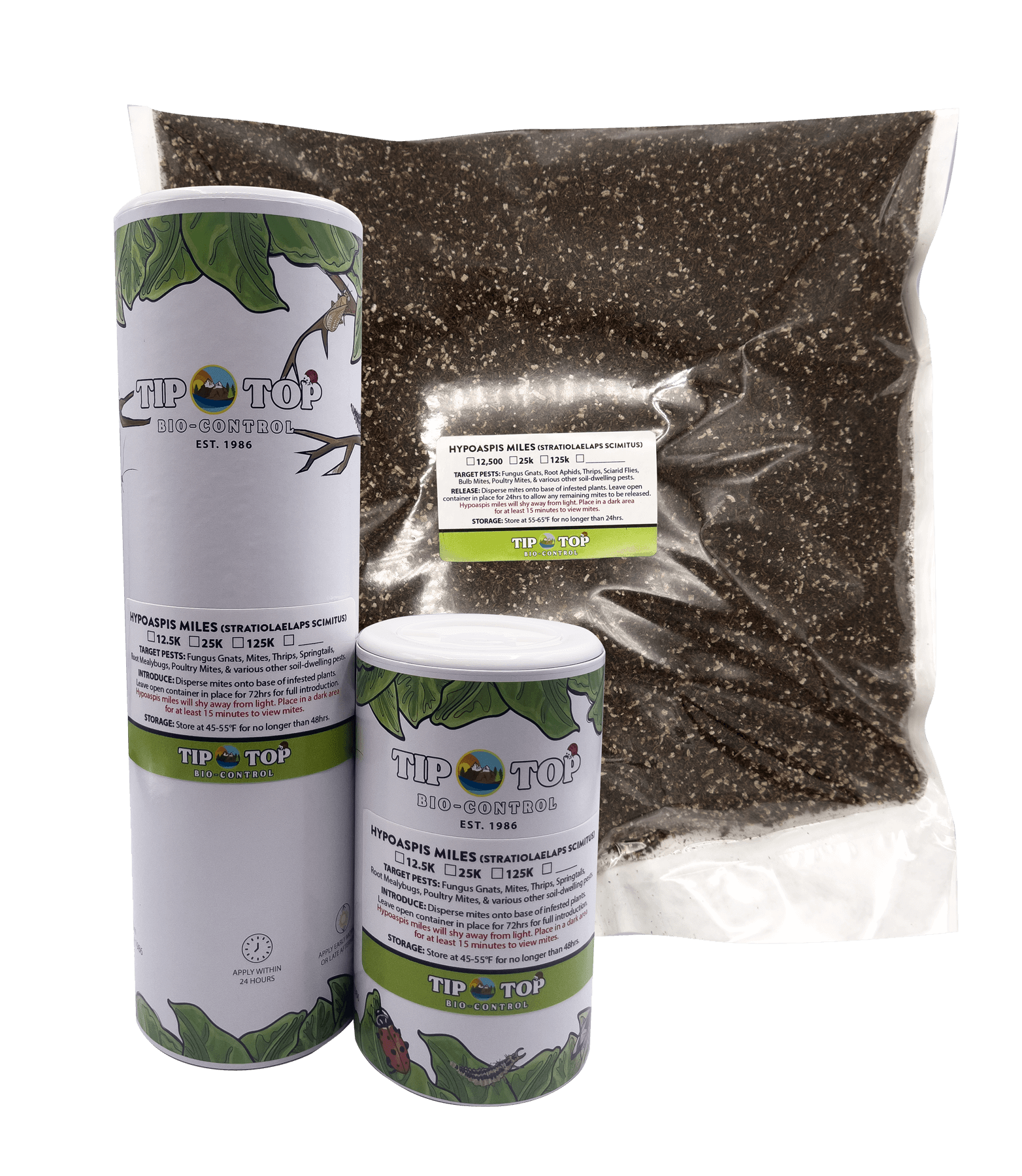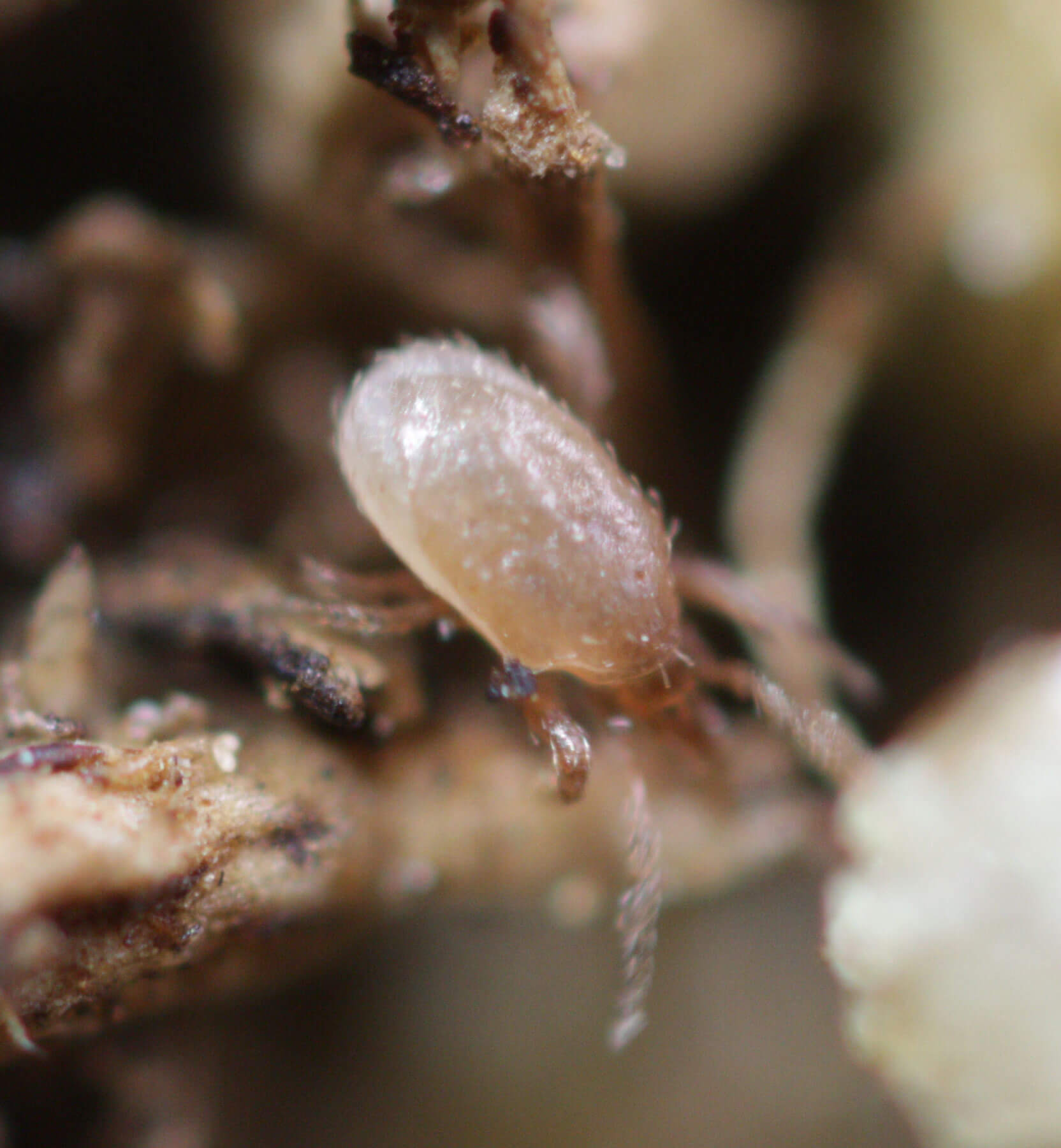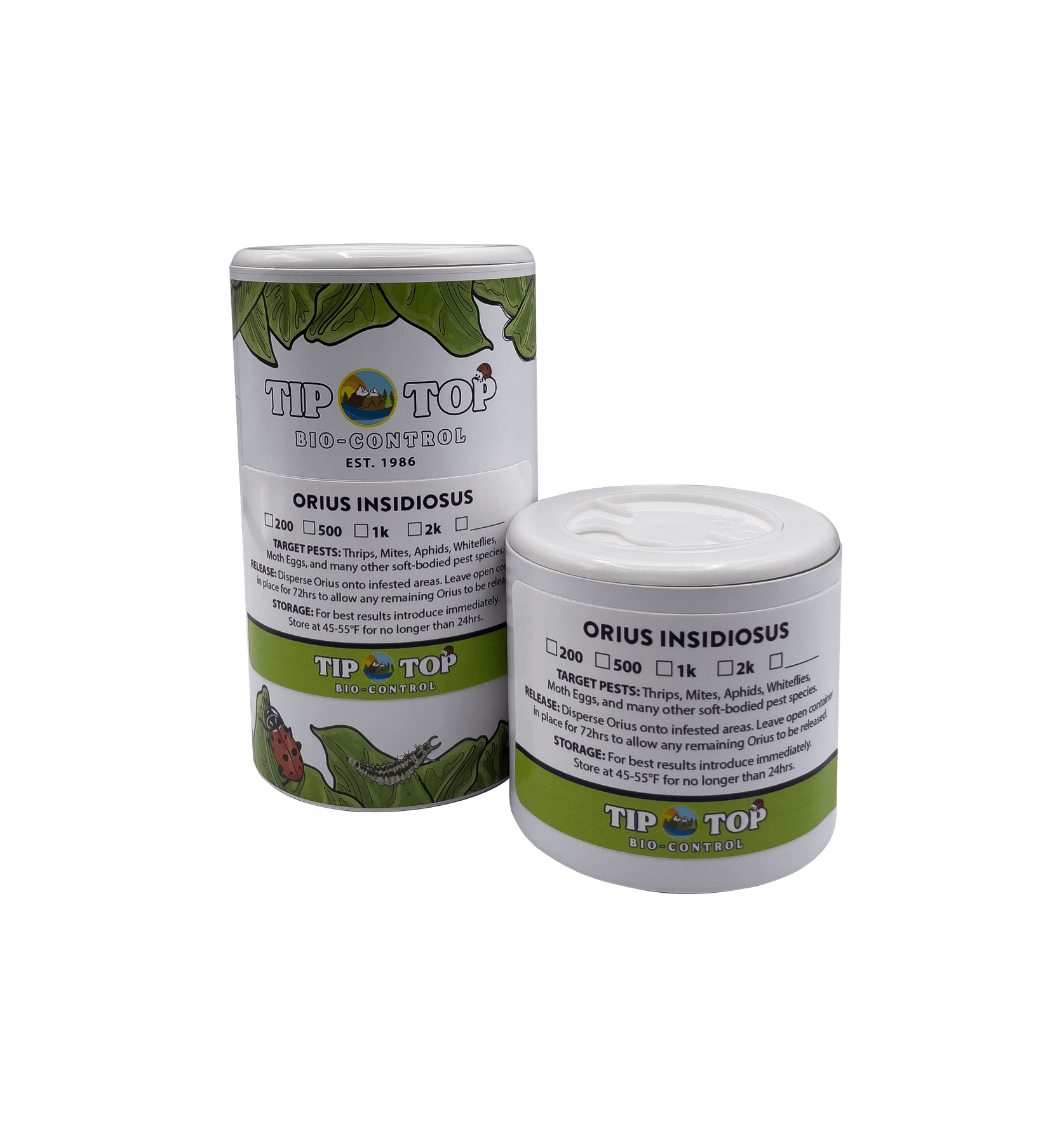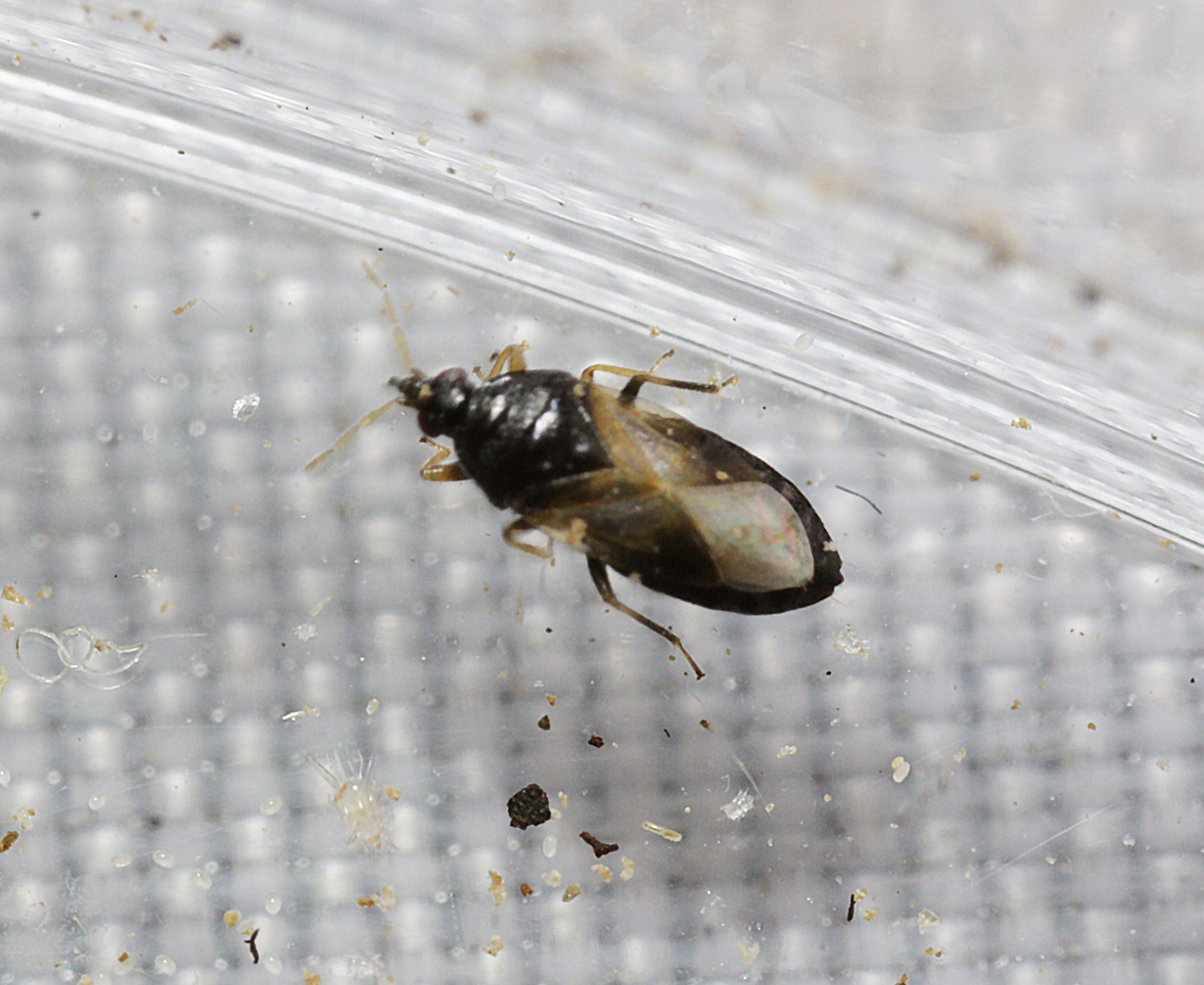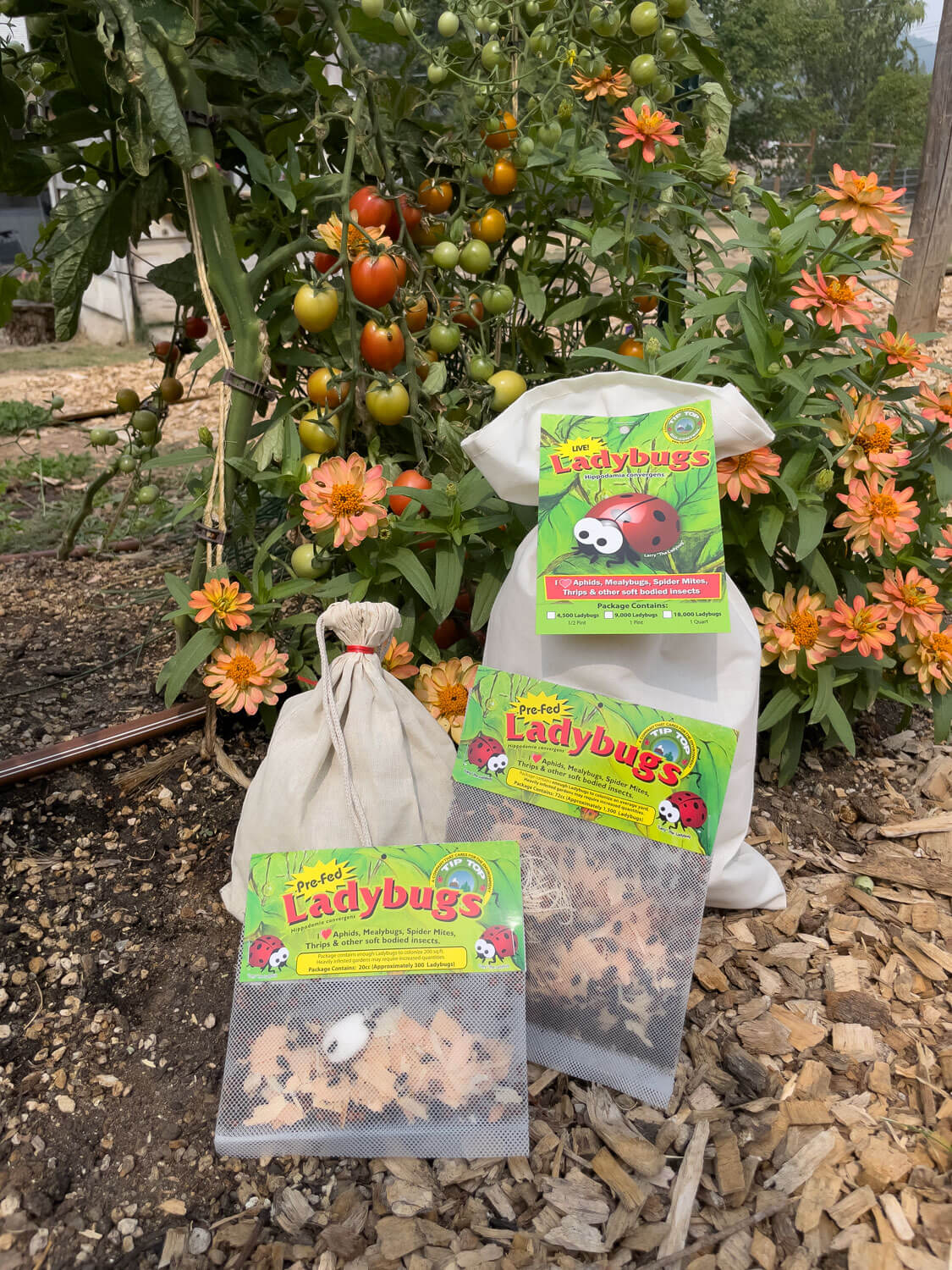Spidermite Control
Spider Mite Control
There are over 1,200 species of spider mite in the world. However, the two-spotted spider mite is the most common spider mite.
Two-spotted spider mites are easily identified by the two "spots" on their back. These mites feed on the underside of leaves causing the stippling damage. In addition, spider mite activity is visible in the tight webs that are formed under leaves and along stems. Spider mites thrive in high heat and low humidity.
BOTTLED MITES:
Best choice for an active infestation.
Our adult predatory mites are a natural tool to help cure an active infestation of mites. These tiny predators feed on all life stages of unwanted pests in your garden and help to balance the ecosystem. Our beneficial insects work quickly to reduce light to moderate infestations. With heavier infestations, increase in quantity and frequency may be required.
SLOW RELEASE SACHETS:
Don't fight pests, prevent them.
Avoiding garden pests is far easier than dealing with an outbreak of bad bugs - be proactive by preventing the problem. Our sachets are filled with a blend of predatory mites in a variety of life stages, providing a slow release of pest control into your garden. When it comes to having a healthy garden, preventative care is key. Release monthly as part of your IPM program.
So what works best for Spider Mite control?...
There are many species of predatory mites used for spider mite control; however, the most common are Phytoseiulus persimilis and Neoseiulus californicus. P. persimilis strictly feeds on two-spotted spider mites, which makes it a curative treatment. Neoseiulus fallacis, Amblyseius cucumeris, Amblyseius andersoni, and Amblyseius swirskii are also great options for spider mite control.
Phytoseiulus persimilis: Two-Spotted Spider Mites.
Special Blend Mite Mix: A mix of multiple different type of predatory mites that targets a variety of different types of spider mites.
Neoseiulus californicus: Two Spotted Spider Mites, Broad Mites, Cyclamen Mites, Russet Mites, Rust Mites. Works well in High Heats! Generalist, with a slow eating habit, which allows them to last longer without a food source. Works well as preventative care!
Neoseiulus fallacis: European Red Mite, Two-Spotted Spider Mites, Spruce Spider Mites and Southern Red Mites, Broad Mites, Rust Mites and Cyclamen Mites. Works well in Northern climates as well as Cooler climates. Native to the USA.
Amblyseius cucumeris: Western Flower Thrips, Onion Thrips, Cyclamen Mites, Broad Mites, Rust Mites, Two-Spotted Spider Mites and Russet Hemp Mites. Preventative Spider Mite control.
Amblyseius andersoni: Broad Mites, Cyclamen Mites, Russet Hemp Mites and Two-Spotted Spider Mites. Works well in High Heats! Russet Hemp Mite Predator! Generalist mite predator that attacks many species of Spider Mites.
Amblyseius swirskii: Broad Mites, Russet Hemp Mites, Thrips, Whitefly eggs, Spider Mites, Tarsonemid Mites.
Sort by
3 products
Filters

